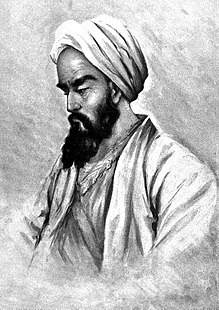
The Buyid dynasty, also spelled Buwayhid, was a Zaydi and, later, Twelver Shia dynasty of Daylamite origin, which mainly ruled over central and southern Iran and Iraq from 934 to 1062. Coupled with the rise of other Iranian dynasties in the region, the approximate century of Buyid rule represents the period in Iranian history sometimes called the "Iranian Intermezzo".
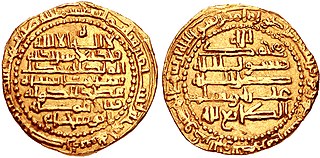
Abu Bakr ʿAbd al-Karīm ibn al-Faḍl, better known by his regnal name al-Ṭāʾiʿ liʾllāh/biʾllāh, was the Abbasid caliph of Baghdad from 974 to his deposition in 991. He was in office during the domination of Iraq by the Shi'a Buyid dynasty, and as a result is generally considered a powerless figurehead under the thumb of the Buyid emirs. His tenure was also marked by strife between rival Buyid rulers and the frequent change of hands of Baghdad: al-Ta'i' himself was raised to the throne by a rebel Turkic general, Sabuktakin, who deposed al-Ta'i's father, al-Muti'. During periods of such strife, al-Ta'i' was able to exert some measure of political independence, but under stronger rulers he was sidelined, and was obliged to marry the daughters of the emirs Izz al-Dawla and Adud al-Dawla. Al-Ta'i's status suffered under Adud al-Dawla in particular, who turned to pre-Islamic Persian models for legitimacy, and relegated Iraq to the status of a simple province ruled from Fars. Al-Ta'i' was deposed on 22 November 991 by Baha al-Dawla, and replaced with his cousin, al-Qadir. He spent the rest of his days, until his death in 1003, confined to the caliphal palace.
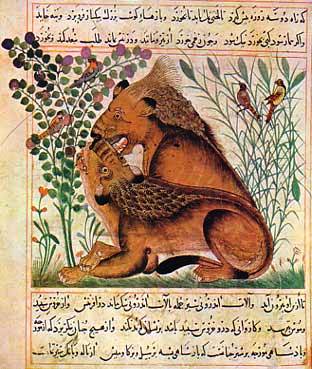
The Bukhtīshūʿ were a family of either Persian or Syrian Eastern Christian physicians from the seventh, eighth, and ninth centuries, spanning six generations and 250 years. The Middle Persian-Syriac name which can be found as early as at the beginning of the 5th century refers to the eponymous ancestor of this "Syro-Persian Nestorian family". Some members of the family served as the personal physicians of Caliphs. Jurjis son of Bukht-Yishu was awarded 10,000 dinars by al-Mansur after attending to his malady in 765AD. It is even said that one of the members of this family was received as physician to Ali ibn Husayn Zayn al-Abidin, the Shia Imam, during his illness in the events of Karbala.

'Ali ibn al-'Abbas al-Majusi, also known as Masoudi, or Latinized as Haly Abbas, was a Persian physician and psychologist from the Islamic Golden Age, most famous for the Kitab al-Maliki or Complete Book of the Medical Art, his textbook on medicine and psychology.

In the history of medicine, "Islamic medicine" Also known as "Arabian medicine" is the science of medicine developed in the Middle East, and usually written in Arabic, the lingua franca of Islamic civilization.
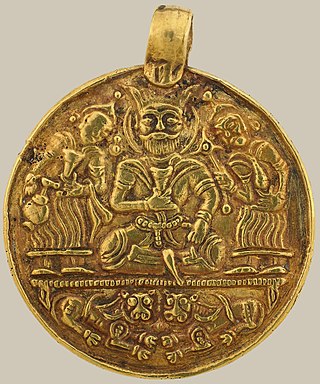
Fannā (Panāh) Khusraw, better known by his laqab of ʿAḍud al-Dawla was an emir of the Buyid dynasty, ruling from 949 to 983, and at his height of power ruling an empire stretching from Makran to Yemen and the shores of the Mediterranean Sea. He is widely regarded as the greatest monarch of the dynasty, and by the end of his reign he was the most powerful ruler in the Middle East.

A bimaristan or simply maristan,, known in Arabic also as dar al-shifa is a hospital in the historic Islamic world. Its origins can be traced back to Sassanian Empire prior to the Muslim conquest of Persia.
Al-Mada'in was an ancient metropolis situated on the Tigris in what is now Iraq. It was located between the ancient royal centers of Ctesiphon and Seleucia, and was founded by the Sasanian Empire. The city's name was used by Arabs as a synonym for the Sasanian capital of Ctesiphon, in a tradition that continued after the Arab conquest of Iran.
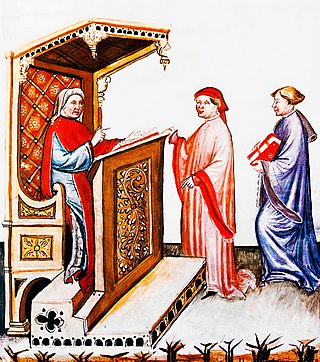
Abū 'l-Ḥasan al-Muḫtār Yuwānnīs ibn al-Ḥasan ibn ʿAbdūn ibn Saʿdūn ibn Buṭlān known as Ibn Buṭlān was a physician and Arab Christian theologian from Baghdad during the Abbasid era. He left his hometown for travels throughout the Iraq, Syria, Egypt, and Asia Minor during which he practiced medicine, studied, wrote, and engaged in intellectual debates most famously the Battle of the Physicians with Ibn Riḍwān. He was a first-hand witness of the Schism of 1054 in Constantinople, contributing a work to the discussions surrounding it for Patriarch Michael I Cerularius. After his time in Constantinople he remained in the Byzantine Empire, becoming a monk in Antioch during the end of the Macedonian Renaissance.

The practice and study of medicine in Persia has a long and prolific history. The Iranian academic centers like Gundeshapur University were a breeding ground for the union among great scientists from different civilizations. These centers successfully followed their predecessors’ theories and greatly extended their scientific research through history. Persians were the first establishers of modern hospital system.

Islamic psychology or ʿilm al-nafs, the science of the nafs, is the medical and philosophical study of the psyche from an Islamic perspective and addresses topics in psychology, neuroscience, philosophy of mind, and psychiatry as well as psychosomatic medicine. In Islam, mental health and mental illness were viewed with a holistic approach. This approach emphasized the mutual connection between maintaining adequate mental wellbeing and good physical health in an individual. People who practice Islam thought it was necessary to maintain positive mental health in order to partake in prayer and other religious obligations.
Amīn-ad-Daula Abu-'l-Faraǧ ibn Yaʻqūb ibn Isḥāq Ibn al-Quff al-Karaki was an Arab physician and surgeon and author of the earliest and largest medieval Arabic treatise intended solely for surgeons.
Amīn al-Dawla Abu'l-Ḥasan Hibat Allāh ibn Ṣaʿīd ibn al-Tilmīdh was a Christian Arab physician, pharmacist, poet, musician and calligrapher of the medieval Islamic civilization.
Abu al-Majd ibn Abi al-Hakam Ubaydullah Ibn al-Muzaffar al-Bahili was an Andalusian-Arab physician, musician and astrologer of the Islamic Golden Age who lived in Damascus, Syria.
Ibrahim ibn Baks was a physician and a regular lecturer in Al-'Adudi Hospital, a bimaristan located in Baghdad during the Islamic Golden Age. He became blind towards the end of his life.

The Islamic Golden Age was a period of scientific, economic and cultural flourishing in the history of Islam, traditionally dated from the 8th century to the 13th century.
Abū Al-Faraj ʿAlī ibn al-Husayn ibn Hindū was a Persian poet, a man of letters, and a practitioner of Galenic medicine coming from Rey. Scholars have posited multiple explanations for his name, including that he was Persian and from Hindujān, his possible Indian heritage, and that he was an Arab descendant of the Islamic prophet, Muhammad.
'Alī ibn al-Ḥusayn Abū l-Qasim al-'Alawi Ashraf al-Sharif al-Husayni,, , was a 10th-century Islamic astronomer and astrologer.

The Khuld Palace was one of the principal caliphal palaces in Baghdad during the early Abbasid Caliphate.


